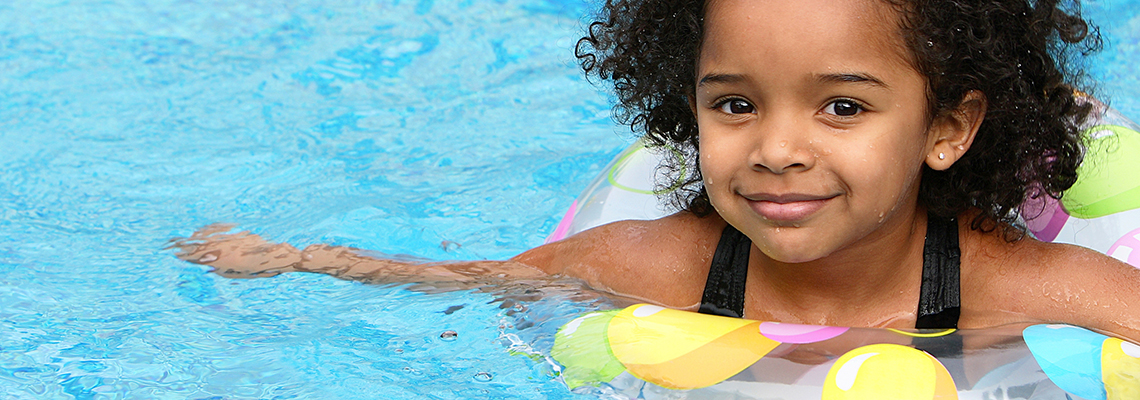
Few activities are more refreshing than swimming on a hot summer day. Whether a small backyard “kiddie pool” or a trip to the beach, both parents and children alike enjoy time at the water.
And not only that, swimming is good for us. Exercise science experts list swimming as one of the best forms of exercise. Swimming provides a full-body workout and increases endurance and heart health as well as building muscle strength. Even if your children are not swimming laps back and forth, they likely are getting great exercise in the water.
But water presents risks, too. Drowning is the leading cause of death for toddlers in the United States. It is also among the top causes of death for children of all ages. There are several steps that parents can take to keep our children safe in and near water.
As detailed in my book, Raising Kids Who Choose Safety, an easy way to keep children safe is to follow the “TAMS Method” – Teach, Act, Model and Shape.
- Teach. We adults can teach water safety in many ways, but a key one is to teach our children to swim. Even strong swimmers face risk in the water, but there is significant evidence that good swimmers have a lower risk of drowning. Until your children learn how to swim well, consider having them swim while wearing a life vest.
- Act. Action to prevent drowning also takes many forms. First, we need to keep children away from water when there are no adults around. Backyard pools should be fenced in, and gates always closed. Inflatable and kiddie pools should be emptied nightly to avoid wandering toddlers from discovering them, and hot tubs should be covered. Second, it’s important to always supervise children near water. Whenever children (or for that matter, adults) are swimming, an adult who knows how to make a safe rescue and provide first aid should be supervising. Supervising adults should also make sure to minimize distractions, such as cell phones.
- Model. By modeling, we demonstrate safe behavior for our children. Wear a life vest on any type of boat (including canoes and kayaks), and your children will follow. Also, listen to lifeguard requests, and your children will too.
- Shape. Over time, we can shape or encourage our children to choose to act in safe ways. We do this by setting and enforcing safety rules. We can also praise or reward children when they make a safe choice. As an example, if your child backs off when his friends start rough-housing in the pool, you can praise them when driving home.
Before closing, let’s consider three examples of how parents successfully practiced summertime safety near water.
It was Memorial Day weekend and LaShonda decided to celebrate the start of summer by purchasing a plastic kiddie pool and a sprinkler for her toddlers. On Saturday morning, she filled the pool with water, and attached the sprinkler to a hose. It was playtime! Her two toddlers, plus the neighbor’s boy, enjoyed the water all weekend. To keep the children safe, LaShonda and the neighbor’s parents practiced careful supervision. They watched the children constantly and carefully when they were in the water. They also emptied the pool every night and flipped it upside down to be sure no children played unsupervised in water.
Maria and her family decided to take a family trip to the beach. They chose a beach with lifeguards on duty and set three safety rules: (1) Always use the “buddy system”, (2) never go into water that is too deep for you to reach the bottom, and (3) their youngest child, Manny, could not yet swim so he was required to wear a life jacket whenever he went into the water. Maria and her husband traded off “watch” duties, keeping an eye on the children when they were at the beach.
Jim grew up in the country and loves to fish. One Sunday afternoon, he relived his childhood by taking his two boys fishing on the lake. Jim was an excellent swimmer and knew the boat was unlikely to flip over, but he wore a life jacket anyway, modeling safe behavior for his boys. He also stayed sober until he was back at home. When the boys wanted to jump into the lake and swim, Jim explained that they needed to do so in a safe manner. They paddled toward shore, anchored the boat, and then carefully got into the water away from any other boat traffic and in an area where Jim knew it was safe to swim.
More information is available at the below websites:
https://www.safekids.org/poolsafety
https://www.chp.edu/injury-prevention/safety/water-and-sun/swimming
https://health.clevelandclinic.org/swim-safety-for-kids/
https://www.redcross.org/get-help/how-to-prepare-for-emergencies/types-of-emergencies/water-safety/home-pool-safety.html
Proper Citation for this blog post:
Schwebel, D. C. (2023, July 7). It’s summertime, and it’s hot! How to cool off safely in the water. Retrieved from https://infoaboutkids.org/blog/its-summertime-and-its-hot-how-to-cool-off-safely-in-the-water/.
















